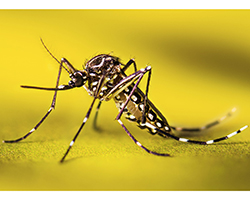
There are many ways to avoid certain diseases. We can protect our skin from the sun to avoid some skin cancers. We know that a healthy diet can help avoid some cancers and type 2 diabetes. But we also know that we can avoid catching certain diseases if we avoid the animals that carry them.
It is important to stay away from mosquitoes if you can. There are a ton of different diseases people can catch from mosquitoes. People living in areas with high mosquito populations may be at high risk of catching a disease from them.
Here are some of the mosquito-carried diseases that impact the most people, or that are most well known:
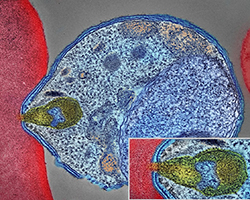
Globally, malaria is the third largest killer of children between the ages of one month and five years, following pneumonia and diarrhea.
Symptoms of malaria: Fever, chills, sweats, headaches, nausea and vomiting, body aches, and general malaise. Severe symptoms include anemia, breathing problems, convulsions (seizure or muscle spasms), and coma. If a pregnant woman is infected, this disease can cause premature births or low birth weights. If a child is infected, it can lead to cerebral malaria which can result in problems with coordination, balance, speech, coma and death.
Malaria incubation: 7 - 30 days
Malaria treatment: There is a vaccine, but it is not highly effective. You can take antimalarial drugs to prevent or treat an infection.
Transmission of malaria: Passed through the bite of an infected female Anopheles mosquito.
Malaria is mostly found in: Africa, South Asia, and parts of Central and South America, the Caribbean, Southeast Asia, the Middle East, and Oceania.
Annual deaths from malaria: Malaria infected 241 million people and killed 627,000 in 2020.
The malaria parasite is carried by: 30 - 40 different species of mosquito within the Anopheles genus.
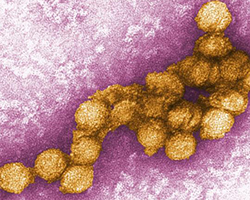
Dengue was first isolated by two scientists by the name of Ren Kimura and Susumu Hotta in 1943. The virus was collected during the dengue outbreak in Nagasaki, Japan.
Symptoms of dengue: Nausea, vomiting, a rash, aches, and pains that last for 2 - 7 days. Severe dengue infection can cause belly pain, vomiting of blood, blood in stool, bloody gums, exhaustion, and restlessness.
Dengue incubation: 5 - 7 days
Dengue treatment: A 3-dose vaccine is approved for children aged 9-16 yrs old that live in areas with dengue. It is called Dengavaxia and is available in the U.S. A patient must have had dengue previously to get the vaccine. If they haven't, the risk of severe illness during a dengue infection actually increases. Anyone who is immunocompromised should not take the vaccine.
Transmission of dengue: Passed through the bite of an infected female Aedes mosquito. Dengue can spread from mother to child when the mother is pregnant or breastfeeding. There are four types of dengue viruses, so a person can be infected up to four times in their life.
Dengue is mostly found in: Southeast Asia, the western Pacific islands, Latin America and Africa, common in the U.S. territories of American Samoa, Puerto Rico, and the U.S. Virgin Islands, and the freely associated states, including the Federated States of Micronesia, the Republic of Marshall Islands, and the Republic of Palau.
Annual deaths from dengue: Each year up to 400 million people are infected, 100 million experience symptoms, and 40,000 die from dengue.
The dengue viruses are carried by Aedes mosquitoes.
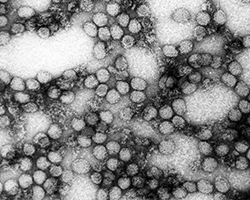
Yellow fever got its name because sometimes people's skin turn a yellowish color. It was first discovered in an outbreak in 1648.
Symptoms of yellow fever: Fever, chills, headache, back pain, body aches, nausea, vomiting, weakness, yellow skin (jaundice), bleeding, shock, organ failure. Most people who get infected don't experience symptoms or have mild symptoms. 20-50% of people who develop severe symptoms will die.
Yellow fever incubation: 3 - 6 days
Yellow fever treatment: No medicine is available, but people 9 months and older can get a vaccine. The vaccine should protect you for life.
Transmission of yellow fever: Passed through the bite of an infected female Aedes or Haemagogus mosquito. Yellow fever can be transmitted from non-human primates to humans in the jungle or African savannah.
Yellow fever is mostly found in: Tropical and subtropical areas of Africa and South America.
Annual deaths from yellow fever: 30,000 deaths each year (90% occurring in Africa).
The yellow fever virus is carried by: Aedes aegypti, Aedes albopictus, and Haemagogus leucocelaenus.
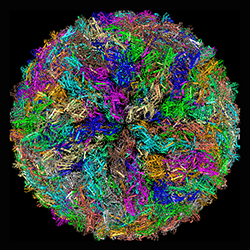
Japanese encephalitis was first discovered in 1871 in Japan. This is why it is called Japanese encephalitis.
Symptoms of Japanese encephalitis: Most people don’t experience symptoms, but those that do experience the following. High fever, headache, neck stiffness, disorientation, coma, seizures, paralysis and ultimately death. Of the people who develop severe symptoms and survive, ~20-30% suffer permanent problems such as paralysis, recurring seizures, or loss of speech.
Japanese encephalitis incubation: 4 - 14 days
Japanese encephalitis treatment: Vaccines are available to protect yourself (IXIARO is available in the US).
Transmission of Japanese encephalitis: Bite of an infected Culex mosquito. Humans don't allow the virus to complete its life cycle. This disease mainly infects pigs and birds. It spreads more in farming areas, especially those where fields are irrigated.
Japanese encephalitis is mostly found in: Rural areas in South East Asia, the Pacific islands and the Far East.
Annual deaths from Japanese encephalitis: Up to 25% of people who are infected with this disease may die. 68,000 people are infected and 13,000 - 24,000 people die each year.
The Japanese encephalitis virus is carried by Culex mosquitoes, especially Culex tritaeniorhynchus.
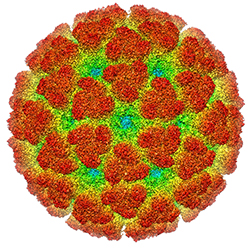
Chikungunya was first discovered by RW Ross in Tanzania in 1952. This disease gets its name from the Kimakonde language meaning to “become contorted”.
Symptoms of Chikungunya: Fever, joint pain, headache, rash, muscle pain, death (in rare cases). If infected once, you will most likely not experience symptoms again. People most at risk include people over 65 years of age, newborns, and people with conditions such as high blood pressure, diabetes, or heart disease.
Chikungunya incubation: 3-7 days
Chikungunya treatment: No vaccines or medicines are available.
Transmission of Chikungunya: Passed through the bite of an infected female Aedes mosquito.
Chikungunya is mostly found in: Africa, Southeast Asia, the Indian subcontinent, Pacific Region and most probably in the (sub) tropical regions of the Americas.
Annual deaths from Chikungunya: In 2021 this disease killed 12 but infected 137,025 worldwide.
The Chikunguna virus is carried by Aedes aegypti and Aedes albopictus mosquitoes.
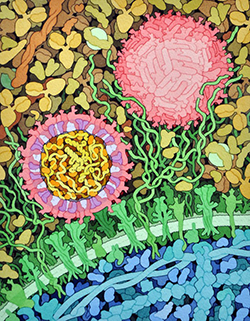
Zika was discovered in 1947 and was named after the Zika forest in Uganda.
Symptoms of Zika: fever, rash, joint pain, and conjunctivitis (red eyes), malaise, headache. Severe Zika infection can make your immune system attack your nerves. This can cause numbness, tingling, and muscle weakness.
Zika incubation: 3-14 days
Zika treatment: No medicines or vaccines are available.
Transmission of Zika: Passed through the bite of an infected female Aedes mosquito. Zika can spread from mother to child during pregnancy. It can also spread through sexual contact, and by touching infected blood. If a pregnant women contracts Zika, the baby can be born with birth defects, have premature birth, or the virus can cause a miscarriage.
Zika is mostly found in: Tropical Africa, Southeast Asia, and the Pacific Islands.
Annual deaths from Zika: In 2021 there were 18,804 cases of Zika and only two deaths.
The Zika virus is carried by Aedes aegypti and Aedes albopictus mosquitoes.
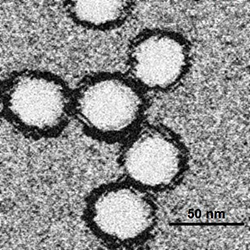
West Nile virus was discovered in 1937 in Uganda. It got its name from the West Nile district in which it was discovered.
Symptoms of West Nile: Headache, fever, body aches, joint pains, vomiting, diarrhea, and rash. 80% of people do not experience symptoms, 20% develop mild symptoms, and less than 1% develop a severe illness. Severe symptoms include encephalitis (brain swelling) or meningitis (brain and spinal cord swelling).
West Nile incubation: 3 - 14 days
West Nile treatment: No vaccines or medicines are available.
Transmission of West Nile: Passed through the bite of an infected female Culex mosquito. West Nile can also be spread through organ transplants and by touching infected blood. In rare cases, it can spread from mother to baby during pregnancy or when breastfeeding. It mainly infects birds; crows and jays may get sick and die from this disease.
West Nile is mostly found in: Africa, regions of Europe and the Middle East, West Asia, Australia, Canada, Venezuela, and the United States.
Annual deaths from West Nile: In 2021, West Nile infected 2,700 people and killed 191 in the US alone.
The West Nile virus is carried by over 65 species of mosquitoes, mainly from the genus Culex.
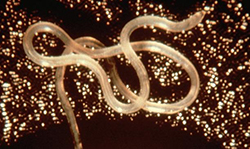
The earliest recorded case of Lymphatic filariasis dates back to 1550 BC from the Ebers Papyrus in Egypt.
Symptoms of lymphatic filariasis: Most people don't show symptoms of infections, but those that do may experience the following. Extreme enlargement of one area of the body, especially the limbs and external genitals. Swelling of tissue (lymphedema) and thickening of the skin. Decreased immune protection against infection by bacteria.
Lymphatic filariasis incubation: It takes about six months for the larvae to develop into adult worms. An adult worm can live between 5-7 years.
Lymphatic filariasis treatment: There is no vaccine for the disease, but people can take drugs that kill the worms.
Transmission of lymphatic filariasis: The larvae of the worms are passed through the bite of an infected mosquito. The larvae are put on the skin when a mosquito takes a blood meal. From there, the larvae enter the body and make their way to the lymph vessels where they develop into adult worms for up to 6 months. Adult worms release microscopic larvae that get picked by a mosquito during its blood meal.
Lymphatic filariasis is mostly found in: Asia, Africa, the Middle East, the Caribbean, the pacific islands, and South America.
Annual deaths from lymphatic filariasis: In 2018, 51 million people were infected with lymphatic filariasis. This disease has severe symptoms but rarely leads to death.
Lymphatic filariasis is commonly known as elephantiasis, because the arms or legs of infected people can swell and become much bigger. The skin in these areas can also thicken to look a little like an elephant’s skin.
The parasitic thread-like nematodes (roundworms) that cause lymphatic filariasis are carried by Aedes, Anopheles, Culex, and Mansonia mosquitoes (and many more!). Wuchereria bancrofti is the main parasite that infects people worldwide.
Additional images via Wikimedia Commons. Mosquito silhouette by CDC.
Read more about: All About Mosquitoes
Bibliographic details:
- Article: Diseases Mosquitoes Carry
- Author(s): Dr. Biology
- Publisher: Arizona State University School of Life Sciences Ask A Biologist
- Site name: ASU - Ask A Biologist
- Date published: 11 Aug, 2022
- Date accessed: 23 May, 2025
- Link: https://askabiologist.asu.edu/mosquito-diseases
APA Style
Dr. Biology. (Thu, 08/11/2022 - 16:15). Diseases Mosquitoes Carry. ASU - Ask A Biologist. Retrieved from https://askabiologist.asu.edu/mosquito-diseases
Chicago Manual of Style
Dr. Biology. "Diseases Mosquitoes Carry". ASU - Ask A Biologist. 11 Aug 2022. https://askabiologist.asu.edu/mosquito-diseases
MLA 2017 Style
Dr. Biology. "Diseases Mosquitoes Carry". ASU - Ask A Biologist. 11 Aug 2022. ASU - Ask A Biologist, Web. https://askabiologist.asu.edu/mosquito-diseases

Some mosquitoes can carry and transmit more than one disease at a time. It's important to avoid mosquitoes to avoid several types of diseases.
Be Part of
Ask A Biologist
By volunteering, or simply sending us feedback on the site. Scientists, teachers, writers, illustrators, and translators are all important to the program. If you are interested in helping with the website we have a Volunteers page to get the process started.



